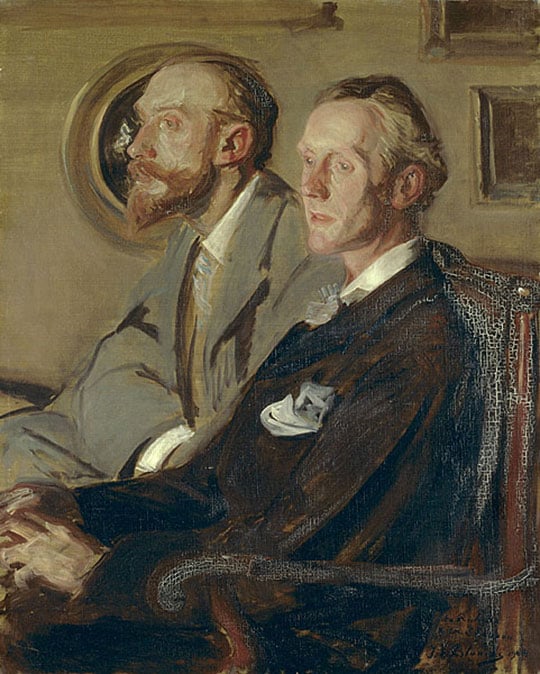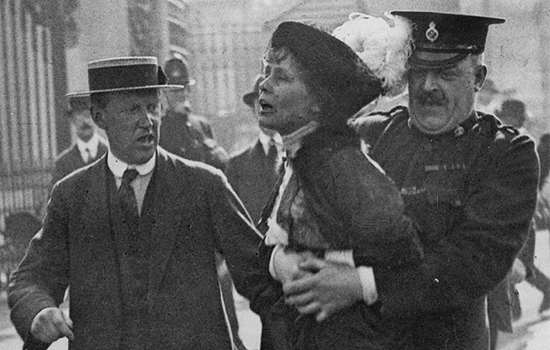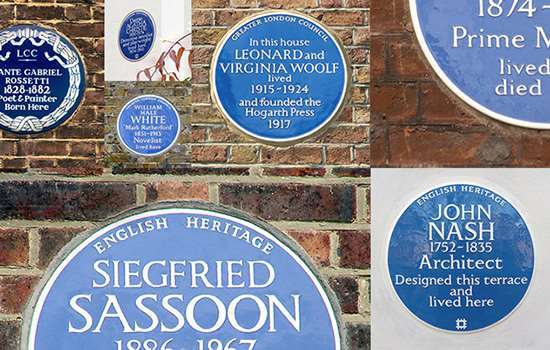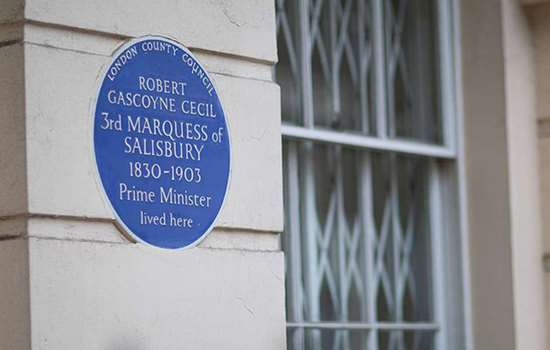LANSDOWNE HOUSE
Plaque erected in 1979 by Greater London Council at Lansdowne House, Lansdowne Road, Notting Hill, London, W11 3LW, Royal Borough of Kensington and Chelsea
All images © English Heritage
Profession
Artist
Category
Fine Arts, Historical Sites
Inscription
In these studios lived and worked the artists CHARLES RICKETTS 1866-1931 CHARLES SHANNON 1863-1937 GLYN PHILPOT 1863-1937 VIVIAN FORBES 1891-1937 JAMES PRYDE 1866-1941 and F. CAYLEY ROBINSON 1862-1927
Material
Ceramic
Lansdowne House was home to several noted artists of the early 20th century, including Charles Ricketts, Charles Shannon, Glyn Philpot, Vivian Forbes, James Pryde and Frederick Cayley Robinson.
The remarkable eight-storey edifice of Lansdowne House was built in 1904 to provide artists’ studios and apartments. It was designed by William Flockhart for Australian art collector Sir Edmund Davis (1861–1939), who had made a fortune from the mining industry in South Africa.
Shannon and Ricketts
Charles Shannon (1863–1937) was a lithographer and painter best known for his portraits. Charles Ricketts (1866–1931) was best known as an illustrator, book designer and stage designer. He created stage designs for George Bernard Shaw and, with Shannon, illustrated books for Oscar Wilde.
Ricketts and Shannon were lifelong partners who met in their teens and cohabited for more than 50 years, including at Lansdowne House, where they lived between 1904 and 1923.
Despite their relative poverty, they built a shared art collection, which they displayed at Lansdowne House and bequeathed to the Fitzwilliam Museum, Cambridge, and the British Museum. Their friend, the painter and printmaker William Rothenstein, noted of Shannon and Ricketts that ‘The partnership seemed perfect; there was never a sign of difference or discord; each set off the other, in looks as in mind.’

Philpot and Forbes
Glyn Philpot (1884–1937) was a painter and sculptor best known for his society portraits. He painted figures including Siegfried Sassoon and Paul Robeson. Like Ricketts, he drew inspiration from the Old Masters, though his work took on a more modernist cast as time went on. Vivian Forbes (1891–1937) was a portrait painter too, and also a poet.
Philpot met Shannon and Ricketts in 1914 and met Forbes during military training the following year. He and Forbes later became partners and they moved to Lansdowne House at their friends’ suggestion in 1923, living and working there intermittently until 1935.
When Philpot died suddenly from a stroke in 1937, Forbes took his own life and was buried in the same grave.
Pryde
James Pryde (1866–1941) was a Scottish artist best known for his graphic design work and posters, in which he collaborated with William Nicholson in a partnership known as Beggarstaffs. Pryde also painted, and had a studio at Lansdowne House for nearly 25 years after 1915.
Cayley Robinson
Frederick Cayley Robinson (1862–1927) was a Symbolist painter and illustrator who also created theatre set designs. In 1914, he moved into a studio flat in Lansdowne House with his wife, the artist Winifred Lucy, and their daughter Barbara. Cayley Robinson produced some of his best-known work at this time.
Sir Edmund Davis commissioned him to paint four murals of the Acts of Mercy for the entrance hall of the Middlesex Hospital, and he completed the first in 1915. These are now held by Wellcome Collection.
Plaque
The Lansdowne plaque recognising these six artists was put up in 1979 by the Greater London Council. The long inscription – it is the longest on any conventional round plaque in the London scheme – meant that the plaque cost twice as much as usual.
Further Reading
-
Joseph Darracott, ‘Shannon, Charles Haslewood (1863–1937)’, Oxford Dictionary of National Biography (2004; accessed 29 Jan 2025; access with a UK public library card)
-
GP Delaney, ‘Ricketts, Charles de Sousy (1866–1931)’, Oxford Dictionary of National Biography (2004; accessed 29 Jan 2025; access with a UK public library card)
-
‘Patrons, Donors & Collectors: Charles S. Ricketts (1863–1937) & Charles H. Shannon (1866–1931)’, The Fitzwilliam Museum, University of Cambridge
-
Thomas Lowinsky, revised by JGP Delaney, ‘Philpot, Glyn Warren (1884–1937)’, Oxford Dictionary of National Biography (2004; accessed 29 Jan 2025; access with a UK public library card)
- Peter Parker, ‘Cult status – the idiosyncratic portraits of Glyn Philpot’, Apollo Magazine (28 April 2022; accessed 29 Jan 2025)
-
Emmanuel Cooper, The Sexual Perspective: Homosexuality and Art in the Last 100 Years in the West (2005, Routledge)
-
Derek Hudson, revised by Joanna Soden, ‘Pryde, James Ferrier (1866–1941)’, Oxford Dictionary of National Biography (2004; accessed 29 Jan 2025; access with a UK public library card)
-
Simon Reynolds, ‘Robinson, Frederick Arthur Cayley (1862–1927)’, Oxford Dictionary of National Biography (2004; accessed 29 Jan 2025; access with a UK public library card)


